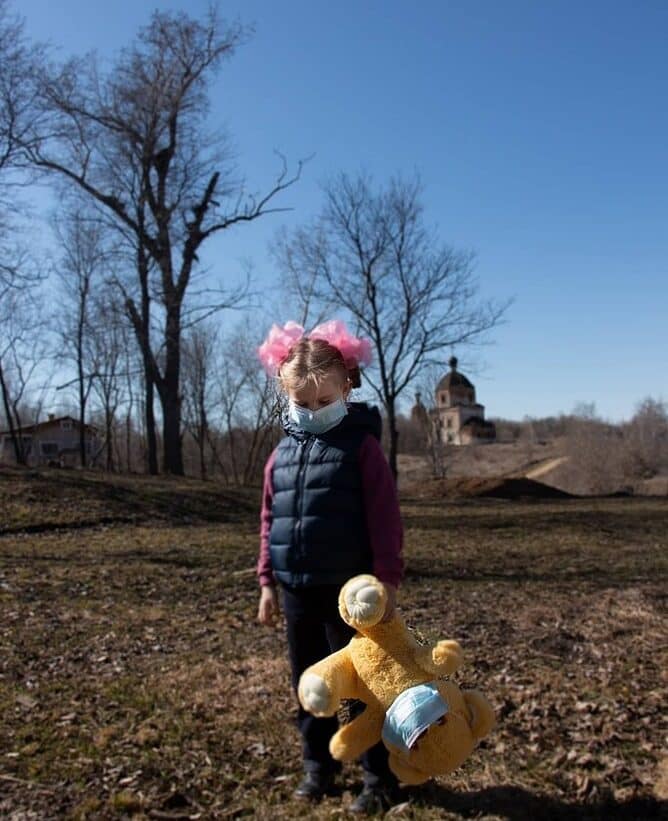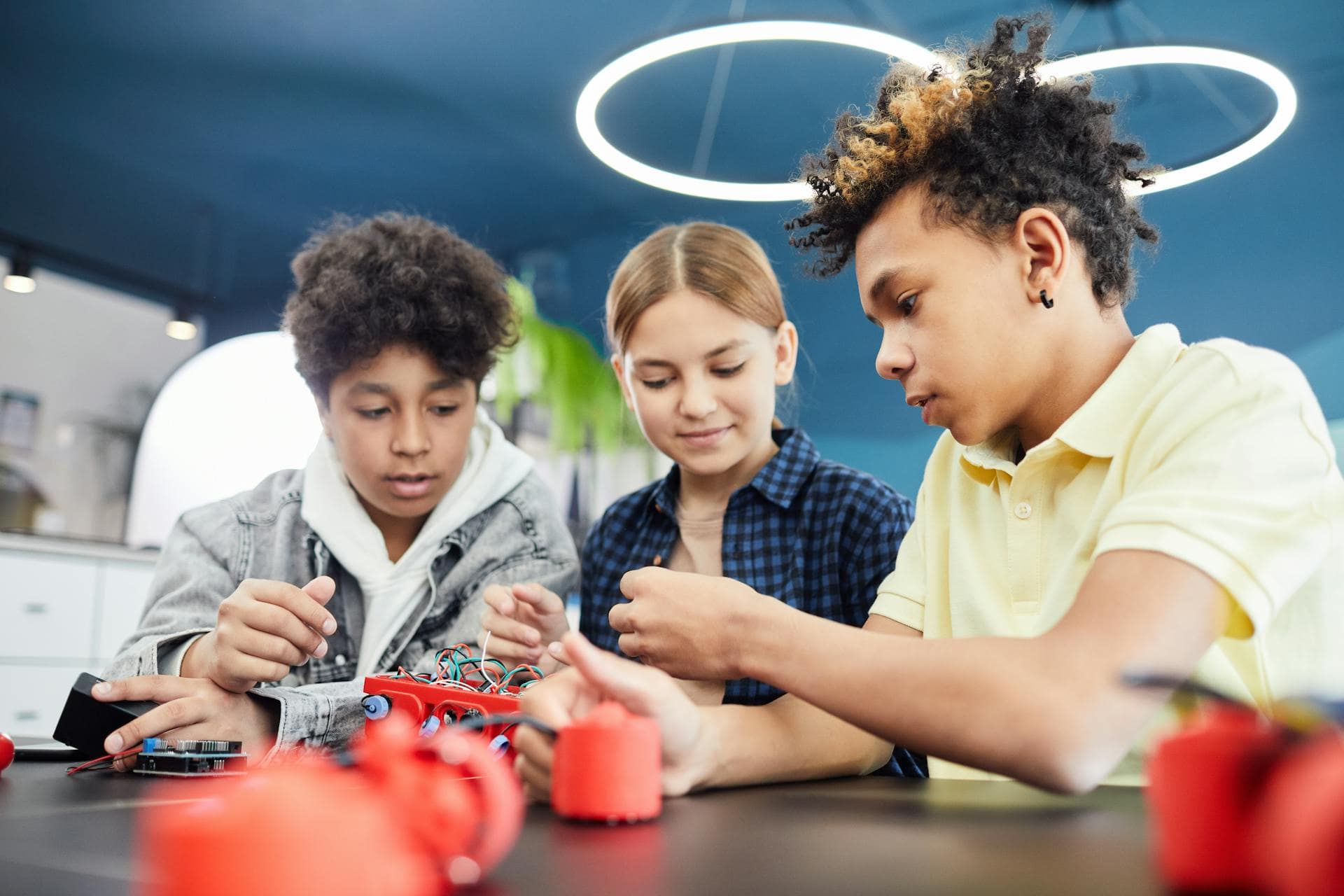
How Do Children Experience the Pandemic?
This post was written by a Psychology student in the context of the Honours Students Workshop Blogging in Science
The Corona (COVID-19) pandemic affects all of us. However, while most things will get back to normal when the pandemic comes to an end, children are confronted with extreme lockdowns in early and formative lifetime phases, which are crucial for their development. Therefore, and due to the unpredictability and upheavals of the pandemic, it is important to investigate its effects on children. This article aims to describe both the impact on child development and what can be helpful for parents and families.
“…Children are confronted with extreme lockdowns in early and formative lifetime phases, which are crucial for their development”
From a medical perspective, COVID-19 is not a big threat for children, who rarely occupy hospitals due to an infection (Dong et al., 2020), and they are less likely to spread the virus than adults are (Rajmil, 2020). Children are therefore not as relevant to fueling the pandemic compared to the rest of us. Nevertheless, children of all ages are affected by the measures that come with a pandemic. However, the adverse effects of Covid on children, concern mostly their psychological health.
The closure of kindergarten classrooms and schools can represent a problem for children, who need to stay at home for long periods of time during the lockdowns (UNICEF, 2021). As a large British survey from 2020 shows, especially those from low-income households were struggling with a lack of private outdoor space (6% without any form of outside space), as well as not having enough desk space for making working and studying from home comfortable (37.5%) (Gilhooly, 2020). Additionally, some parents might not be able to compensate for the lack of a ‘natural’ routine that comes with going to a kindergarten or school, and which is important for preventing chaos. Besides this stressful situation for everyone involved, parents might be having a hard time coping with the pandemic themselves, creating a tense atmosphere. For some parents, it is therefore hardly possible to carry on a ‘like normal’ environment during lockdowns and to prevent passing on their own stress to their children.
“Besides this stressful situation for everyone involved, parents might be having a hard time coping with the pandemic themselves, creating a tense atmosphere.”
Further, it appears that many school-age children and young adolescents are struggling with online education. I observe this not only in my 15-year-old brother and his classmates, but it seems to be a widely spread problem, especially for children from low-income households (Gerber & Leong, 2021; Hoffman & Secord, 2021). Students struggle with hardware problems (difficulties with technology or lack of a computer), not being able to bring up the discipline of studying by oneself (something one is normally only expected to do at university age to this extent), difficulties with concentration, and difficulties understanding the materials through online education. Combined with the struggles of schools to provide high-quality education during the pandemic -since teachers can only provide a fraction of their crucial pedagogical skills through a screen-, students can be left frustrated and unmotivated.
Understandably, many children also struggle with the overwhelming variety of different reactions to the coronavirus. We know that children need consistency and stability for healthy psychological development (Landry et al., 2021); however, the different opinions on Covid-19 coming from all directions might not be consistent enough. This can concern questions, for instance, about whether to wear a mask or not, but also how dangerous the virus is in general. Additionally, quickly changing measures and waves of lockdowns make this crucial stability hard to maintain.
Although our knowledge of the effects of the pandemic on children and adolescents is limited, some studies already show a general decline in mental health. For instance, an Austrian study showed that 55% of 14 to 20-year-olds have depressive symptoms, a prevalence of repeated suicidal ideation of 16%, next to high levels of anxiety, sleep disorders, and symptoms of eating disorders (Pieh et al., 2021). Overall, they found a significant decline in mental well-being compared to 2018. While struggles to cope with the pandemic can manifest themselves in psychological disorders in adolescents, psychological struggles of younger children manifest in increasing somatized, physical symptoms, such as stomach pain and headaches. Children’s quality of life worsened throughout the pandemic, and especially those from households with low socio-economic status are affected. Possible explanations are that due to restrictions, many could not do any sports anymore, and healthy relationships with friends and family members could barely be established or maintained, therefore factors buffering psychological problems were diminished as well (Ravens-Sieberer et al., 2021a; 2021b).
“Although our knowledge of the effects of the pandemic on children and adolescents is limited, some studies already show a general decline in mental health.”
To what extent children are adversely affected, however, seems to depend on the stability within their family, with more stability being related to more resilience and fewer difficulties with handling the pandemic (Ravens-Sieberer et al., 2021a). This includes an emotionally stable relationship with parents, social stability through regular contact with friends, a relaxed environment, a generally optimistic atmosphere, and a stable routine. According to pediatricians, parents can make a great difference by providing their children with clear strategies of how to handle the situation, such as washing hands regularly, by buffering their fear through reassurance that nothing bad will happen to them, or their loved ones, and by ensuring a reliable routine.
“To what extent children are adversely affected, however, seems to depend on the stability within their family, with more stability being related to more resilience and fewer difficulties with handling the pandemic […]”
This time takes a toll on all of us, especially children, and although there are trends (Ravens-Sieberer et al., 2021a; 2021b), we cannot yet be certain about general changes in children’s mental health to the present moment. As Dr. Kroll, head of the Department of Child and Adolescent Psychiatry at the Asklepios clinic Stadtroda in Germany emphasizes, those changes might become visible only in the coming years, with the further development of those living through the pandemic in an early stage of their lives.
For now, it is relevant that public policies keep in mind the psychological effects of pandemic-related decisions on our youngest. Most of all, however, I have my deepest respect for all the parents out there, trying to buffer the effects of the pandemic on their children.
References
Dong, Y., Mo, X., Hu, Y., Qi, X., Jiang, F., Jiang, Z., & Tong, S. (2020). Epidemiology of COVID-19 among children in China. Pediatrics, 145(6). https://doi.org/10.1542/peds.2020-0702
Gerber, H. R., & Leong, P. (2021). Education in times of crises: the dilemmas of digital teaching and learning in primary and secondary schools during the COVID-19 pandemic. Educational Media International, 1-3. https://doi.org/10.1080/09523987.2021.1930480
Gilhooly, R. (2020, September 24). How lockdown has affected children’s lives at home. Children’s Commissioner for England. https://www.childrenscommissioner.gov.uk/2020/08/22/how-lockdown-has-affected-childrens-lives-at-home/
Hoffman, J., & Secord, E. (2021). The Effect of COVID-19 on Education. Pediatric Clinics. https://doi.org/10.1016/j.pcl.2021.05.009
Landry, S. H., Smith, K. E., Swank, P. R., Assel, M. A., & Vellet, S. (2001). Does early responsive parenting have a special importance for children’s development or is consistency across early childhood necessary? Developmental psychology, 37(3), 387–403. https://doi.org/10.1037/0012-1649.37.3.387
Pieh, C., Plener, P. L., Probst, T., Dale, R., & Humer, E. (2021). Mental health in adolescents during COVID-19-related social distancing and home-schooling. Available at SSRN 3795639. http://dx.doi.org/10.2139/ssrn.3795639
Rajmil, L. (2020). Role of children in the transmission of the COVID-19 pandemic: a rapid scoping review. BMJ pediatrics open, 4(1). doi: 10.1136/bmjpo-2020-000722
Ravens-Sieberer, U., Kaman, A., Erhart, M., Devine, J., Schlack, R., & Otto, C. (2021a). Impact of the COVID-19 pandemic on quality of life and mental health in children and adolescents in Germany. European Child & Adolescent Psychiatry, 1-11. https://doi.org/10.1007/s00787-021-01726-5
Ravens-Sieberer, U., Kaman, A., Erhart, M., Devine, J., Hölling, H., Schlack, R., … & Otto, C. (2021b). Quality of life and mental health in children and adolescents during the first year of the COVID-19 pandemic in Germany: Results of a two-wave nationally representative study. Available at SSRN: https://ssrn.com/abstract=3798710
United Nations Children’s Fund, COVID-19 and SCHOOL CLOSURES: One year of education disruption, UNICEF DATA, March 2021. https://data.unicef.org/resources/one-year-of-covid-19-and-school-closures/
Note: featured image by https://www.vperemen.com, Creative Commons license.



